Imagine for a moment how you hit your golf ball straight, watch it go up in the air, and land perfectly in the middle of the fairway or on the green just a few feet from the hole. I’m sure we have all done that at some point since we started playing golf. It is a scenario I play quite often in my head when I think about golf.
When you watch the professional players strike the ball, it all looks so simple and easy. There are several reasons they can execute it with such ease. The major ones are talent and more importantly practice, a lot of practice.
No matter how hard and far you can hit the golf ball, the line has a big importance for better results. As with everything related to golf, there is a whole science behind hitting the ball, but I will try to keep it as simple as possible. I will touch on 5 parts. Those parts are the grip, the ball position, the clubface position, the stance, and the swing itself.
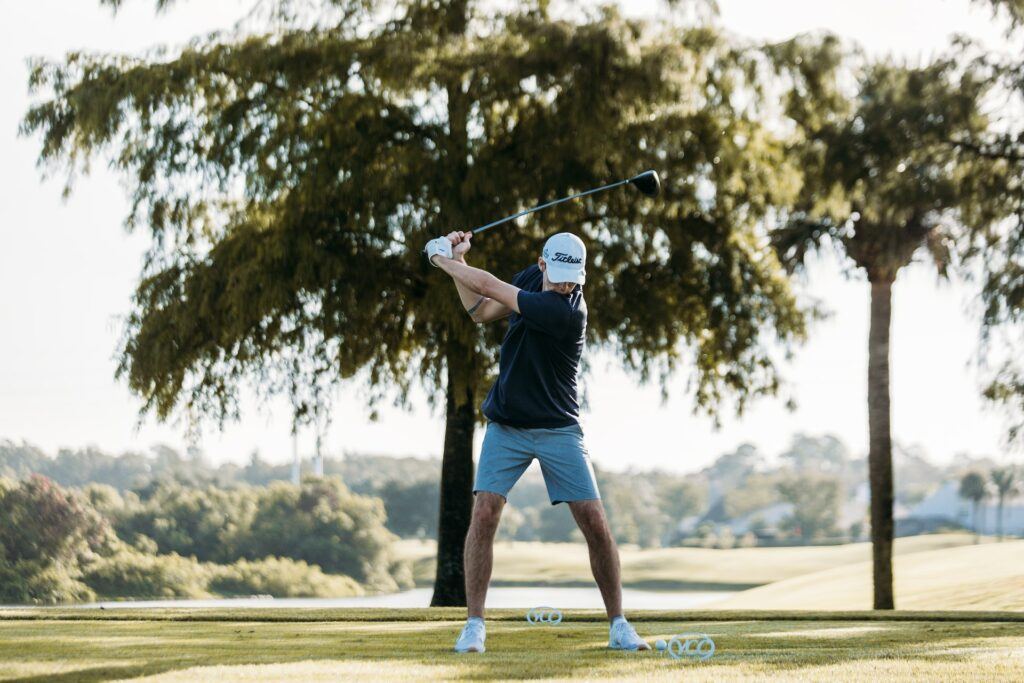
The Prefered Grip
It all starts with the grip, the single most important piece of the puzzle on a golfer’s journey. The way you grip the golf club is a personal preference more than anything, and it would be hard to say one grip is better than the others. There are 3 options for how to grip the golf club, and I will give a short description of each one of them below.
Strong Grip
The hands are rotated more towards the right side of your body. You usually see more than two knuckles on your lead hand, and it closes your clubface on the downswing. If you are hitting a lot of draws, there is a good chance you have a strong grip.
Weak Grip
The hands are rotated more towards the lead side of your body. You usually don’t see any knuckles on your lead hand, you could be seeing some of your lead hand fingers on the trail side of your club handle. It usually opens up your clubface on the downswing, which leads to a lot of sliced shots.
Neutral Grip
It is perhaps the most popular grip. Your hands are centered with your body and the club handle. Your hands are in a “natural” position, and you see two knuckles on your lead hand. When perfected it keeps the clubface square for straight shots. Also, over time it makes it easier to hit the ball in the direction you want.
Any grip you choose, the trail hand is on the bottom and the lead hand is on top when gripping the club. You can interlock your hands (your trail hand little finger and lead hand index finger are interlocked). Then, overlap your hands (your trail hand little finger is on top of the lead hand index finger). Finally, you can have one hand next to the other, also known as the baseball grip (the little finger and the index finger are just touching).
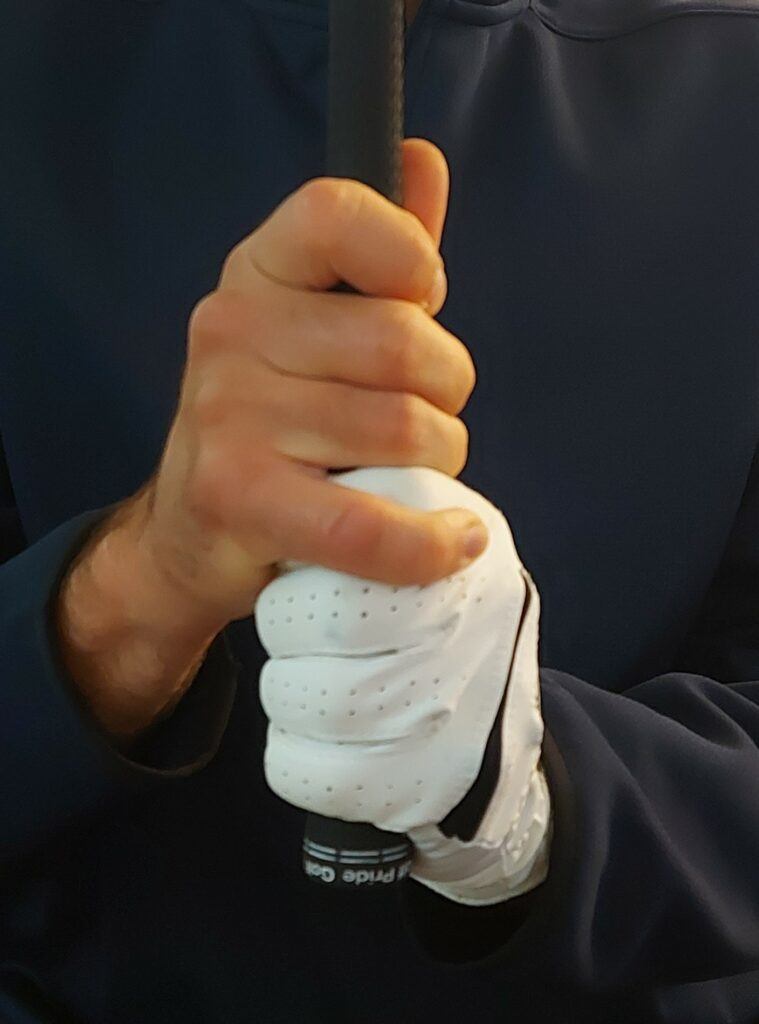
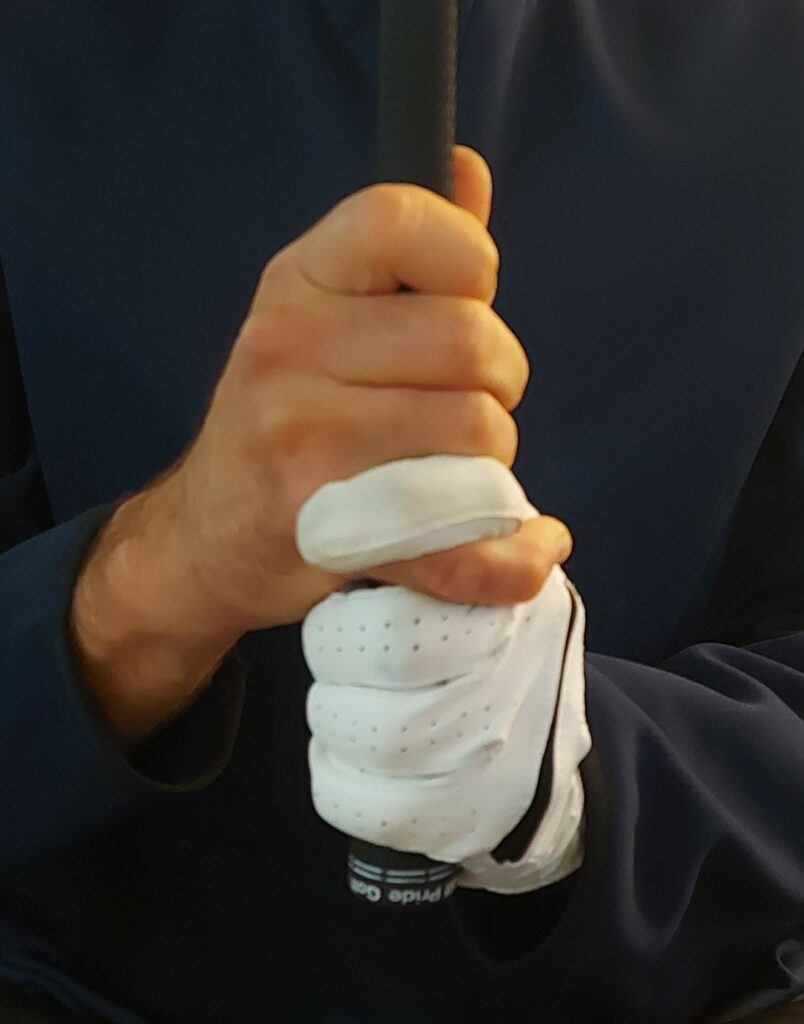
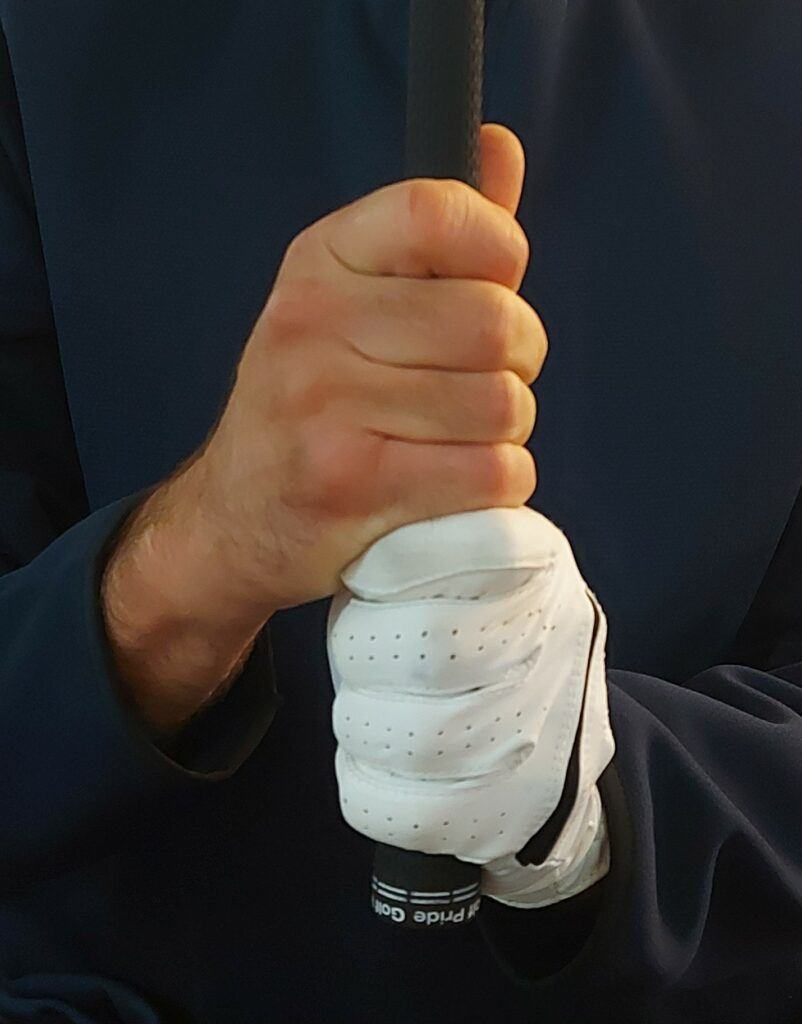
The Importance of the Stance
How you stand up to the ball before striking it is going to determine the success of the shot. I have learned when I focus and commit to it, the shot ends up well. When one or more of the elements are off, you can imagine the outcome (often someone has to yell “fore”).
After you grip the club, you place the clubhead behind the golf ball, with the clubface pointing towards the target. Then you lean your upper body forward, push your bottom backward, and let your arms hang naturally down in a straight line. For stability when your upper body is rotating while you are swinging, you spread the legs shoulder wide.
Golf Ball Position
Similar to the previous parts, the golf ball position will play a big role in the proper shot execution. You want to have the ball in the right position for the right club.
The golf ball position will depend on what club you are currently using. The alignment goes from the center of your body towards your lead foot starting from the wedges to the driver. For the wedges, 9 iron, 8 iron, and 7 iron the ball will be aligned with the center of your body.
As you go lower for the 6 iron, 5 iron, and 4 iron, the ball is aligned a bit toward your lead leg, approximately half golf ball position over from the shorter clubs, and one full ball position over for the woods. For the driver, as you are hitting the ball off the tee, it is aligned with the heel on the inside of your lead foot. If you are using a wood of the tee the ball is positioned about half ball to the right of the ball position for the driver.
Backswing, Downswing & Follow Through
These three elements play an equally important role in the swing and directly affect the outcome of the shot. Where your swing starts and where it finishes will depend on how far you want to hit the ball. You can do a full swing for the furthest distance, a half swing, a quarter of the swing, and anything in between. For example, if your downswing starts at 12 o’clock, your follow-through will finish at 12 o’clock as well. If it starts at 11 o’clock your follow-through will finish at 1 o’clock, and so on.
Backswing
When doing the backswing your whole upper body is rotating with your lower body staying in place. Your trail arm is extended, and your wrist should create a bit of an angle between your arm and the golf club. It would help if you kept your head down.
Downswing
Once you reach the highest point of your backswing, you start the downswing. Now you are unwinding, keep your trail arm extended and rotate synchronized with the rest of your upper body. Your head stays down and focuses on the golf ball.
Follow Through
Once you hit the golf ball you extend your arms towards the target, with the trail arm ending above the lead arm, and you finish the swing. At the same time, you rotate your trail foot toward the target. Your arms and your upper body mustn’t move separately, it is a single rotating motion.
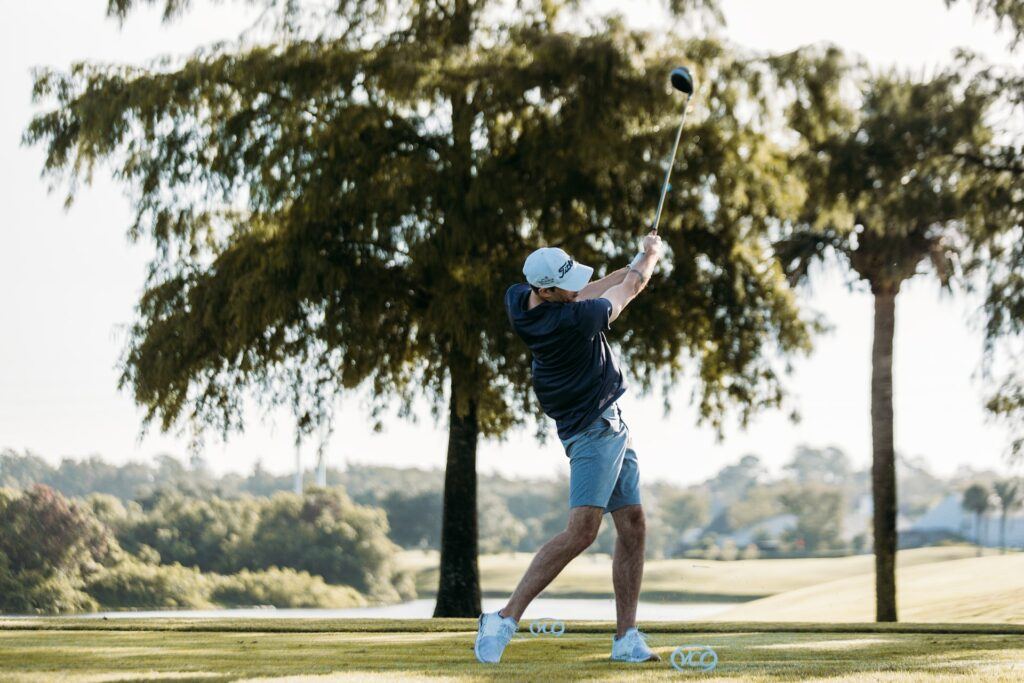
Basics Are One of the Keys to Success
If you sometimes listen to interviews with top athletes in any sport, past or present, they often emphasize the basics as one of the keys leading to success. It is important to go back to basics, especially in times when things are not going the way we want them. Even when you watch the professionals play, things don’t always go as planned.
Some of the greatest golfers made numerous adjustments to their game throughout their careers. Often those adjustments meant going back to basics. So, if you want to be a better golfer and hit your golf ball straight, remind yourself of the basics. In combination with practice and dedication, it will most likely lead to the desired results. Keep on swinging!
Do you hit your ball straight or do you have different swing tendencies? Which golf ball do you use? Share below!
Related:
- How to Control Golf Ball Flight Trajectory – Best Practices
- How to Get Backspin on a Golf Ball – All You Need to Know


As a beginner golfer, I’ve struggled with consistency in my shots, but after trying these tips, I noticed an improvement in hitting the ball straight. The focus on grip, stance, and swing rhythm was particularly helpful. I’m curious, though, how much does ball type affect the straightness of the shot? Is there a specific type of ball that’s recommended for beginners to enhance straight shots?
Hi Corey,
I am glad you found some tips useful. The ball type can affect the straightness of the shot. Balls that are high-spinning, like premium balls, are easier for shape shooting. For that reason, it is easier for them to go either way when there is a lack of control. Beginners, in my opinion, would be better off with two-piece low to medium-compressed golf balls. Balls like the Callaway Supersoft MAX (which is oversized and easier to hit), the Callaway Supersoft, Bridgestone e6, Wilson Duo Soft, or even the Bridgestone e12 Contact would be good starting points. Some, like the Duo Soft, are even cheaper and often on promotion, so you can save some money too.
Thank you for your comment.
Dan